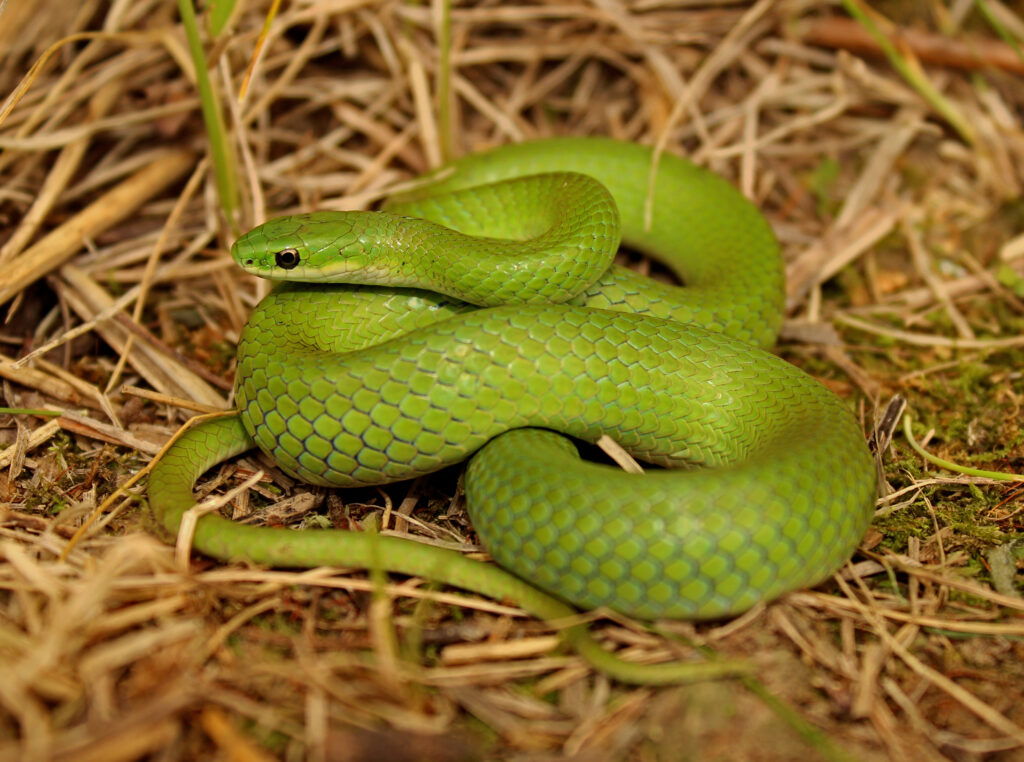Table of Contents
ToggleIntroduction
Snakes have established themselves as deadly predators due to their sophisticated hunting skills and wide range of prey. Do Snakes Eat Fish? While they frequently eat rodents, birds, and amphibians, adding fish to their diet adds another complexity to our understanding of these serpentine predators.
The interaction between snakes and fish demonstrates both sides’ adaptation to various situations. We intend to uncover the subtleties of snake-fish interactions. Giving information on the ecological significance of such dynamics and the evolutionary adaptations that allow these serpents to consume fish.
Diversity Of Snake Species
Exploration of Snake Species that Include Fish in Their Diet: The world of snakes unfolds with a rich tapestry of diversity, each species carving its niche in the intricate web of predator-prey relationships. Regarding including fish in their diet, certain snake species have evolved specific adaptations to exploit aquatic environments. Notable examples include the Northern Water Snake, the Cottonmouth, and various species of sea snakes. These snakes showcase different hunting strategies and behaviors as they navigate the challenges of capturing and consuming fish in their habitats.
Adaptations for Hunting in Various Environments (Aquatic and Terrestrial): The adaptability of snakes constitutes an example of their ability to hunt in both aquatic and terrestrial environments. Aquatic snakes like the Sea Krait display streamlined bodies and paddle-like tails, enabling them to move effortlessly through the water. These adaptations facilitate efficient hunting as they navigate underwater realms in pursuit of fish. Conversely, terrestrial snakes like the Eastern Indigo Snake have evolved powerful muscles and striking speed. Allowing them to ambush fish near the water’s edge. The diversity in hunting strategies among snake species underscores their remarkable ability to exploit varied ecosystems.
Anatomical and Physiological Features Aiding in Fish Predation: Snakes that include fish in their diet possess specialized anatomical and physiological features that enhance their success as piscivores. Some species exhibit enlarged jaw joints and flexible skulls, enabling them to consume relatively large fish—additionally. Sensory adaptations, such as specialized chemoreceptors, aid in detecting underwater prey. The ability to unhinge their jaws allows certain snakes to engulf fish whole. Showcasing an evolutionary advantage in capturing elusive aquatic prey. In marine environments, where buoyancy is a factor. Snakes have developed strategies to overcome this challenge, ensuring effective navigation and predation.
Behavior And Ecology Of Fish Prey
Fish Perception of Snake Threats: In the aquatic realms snakes and fish engage in a perpetual dance of predator and prey. The perception of threats becomes critical to survival. Fish, equipped with finely tuned sensory systems, possess an acute awareness of potential dangers, including snakes. Studies reveal that many fish species are highly responsive to the chemical cues released by snakes. Detecting the pheromones and other scent markers that signal the nearby presence of a predator.
Defensive Mechanisms Evolved by Fish to Evade Predation: As primary targets in the snake’s culinary repertoire. The fish have evolved an arsenal of defensive mechanisms to thwart predation. Swift and agile, many fish species boast remarkable swimming abilities. Allowing them to evade a snake’s strike or escape to safer territories. Some fish have developed intricate patterns and colors, serving as camouflage against the background and as a means of confusing potential predators. Others exhibit schooling behavior, forming tight groups that collectively enhance their chances of survival by confusing and overwhelming the snake. Making it challenging for the predator to focus on a single target.
The Dynamic Interplay Between Snake and Fish Behavior: The dynamic interplay between snake and fish behavior unfolds as a continuous dance shaped by evolution. Armed with their own set of adaptive behaviors, Snakes often employ stealth and patience in their quest for piscine prey. Some species, like the Anhinga, showcase a unique fishing strategy. Where they swim underwater with only their slender necks exposed, waiting for the opportune moment to strike. The interaction between snake and fish behavior is a delicate balance. Where the sensory acuity and evasive maneuvers of fish meet snakes’ cunning and predatory strategies.
Ecological Implications
Influence of Snakes on Fish Populations: The predatory role of snakes within aquatic ecosystems extends beyond the immediate act of consumption, influencing the dynamics of fish populations. Snakes play a vital role in controlling fish numbers, helping to maintain a balanced and healthy ecosystem. By preying on fish, snakes contribute to regulating prey populations, preventing overpopulation that could disrupt the delicate equilibrium within aquatic environments. This ecological service rendered by snakes underscores their significance as keystone predators. Shaping the abundance and distribution of fish species in their habitats.
Reciprocal Impact of Fish on Snake Dietary Diversity: While snakes influence fish populations, the joint impact results from observing snakes’ dietary diversity. As a significant component of a snake’s diet, fish contributes to the nutritional variety that sustains these predators. The availability and abundance of fish in a given environment directly impact snake populations’ dietary preferences and health. This reciprocal relationship highlights the interconnected nature of species within ecosystems, emphasizing the delicate balance that dictates the nutritional choices and overall fitness of snakes and fish.
Broader Ecological Dynamics Shaped by Snake-Fish Interactions: The interactions between snakes and fish reverberate through more general ecological dynamics. Influencing the structure and function of aquatic ecosystems. The predation pressure exerted by snakes shapes fish populations’ behavior and life history strategies. It, in turn, cascades through the food web, affecting other organisms dependent on fish as prey or contributing to the nutrient cycling within aquatic ecosystems. The ecological footprint of snake-fish interactions extends beyond direct predation, influencing the composition and resilience of entire ecosystems.
Synthesis Of Findings
Recapitulation of Key Insights into Snake-Fish Interactions: Exploring the intricate dynamics of snake-fish interactions has unveiled a tapestry of insights that paint a vivid picture of predator-prey relationships in aquatic ecosystems. From the diverse array of snake species that include fish in their diet to the sensory adaptations and hunting strategies they employ. Our journey has illuminated the multifaceted nature of these interactions. Key insights include the nuanced behaviors of fish in response to snake threats. The defensive mechanisms evolved by fish to evade predation, and the dynamic interplay shapes the ongoing dance of predator and prey.
Highlighting the Adaptability and Resourcefulness of Snakes: Central to the narrative of snake-fish interactions is the remarkable adaptability and resourcefulness of snakes. These predators have demonstrated an ability to navigate diverse environments, whether gliding through water or slithering across terrestrial landscapes. The adaptations for hunting in various environments include the streamlined bodies and paddle-like tails of aquatic snakes and the powerful muscles and striking speed of terrestrial species. Showcase the versatility of snakes in exploiting different ecological niches. The inclusion of fish in their dietary repertoire reflects. Their predatory prowess and their capacity to evolve and thrive in a wide range of habitats.
Emphasizing the Interconnectedness of Species within Ecosystems: Perhaps the most profound revelation from our exploration is the interconnectedness of species within ecosystems. The influence of snakes on fish populations and, reciprocally. The impact of fish on snake dietary diversity underscores the delicate balance governing aquatic environments’ health and sustainability. These interactions contribute to broader ecological dynamics, shaping the structure and function of entire ecosystems. The interdependence of snakes and fish highlights the ripple effect of individual species on the intricate web of life. Emphasizing the importance of preserving the delicate equilibrium within these ecosystems.
Conclusion
Our voyage began with considering the several snake species that consume fish as part of their diet. The adaptability of snakes to exploit varied habitats, from sleek water hunters to agile terrestrial species, demonstrated the versatility of their predatory techniques. The morphological and physiological adaptations. That allows snakes to navigate watery environments and catch fish, showing the extraordinary evolutionary journey that these predators have undergone.
Beyond the complexities of snake biology, we investigated the behavior and ecology of the fish that become prey for serpentines. The predator-prey dance unfolded, displaying the subtle methods each side employs in this never-ending struggle for existence.







